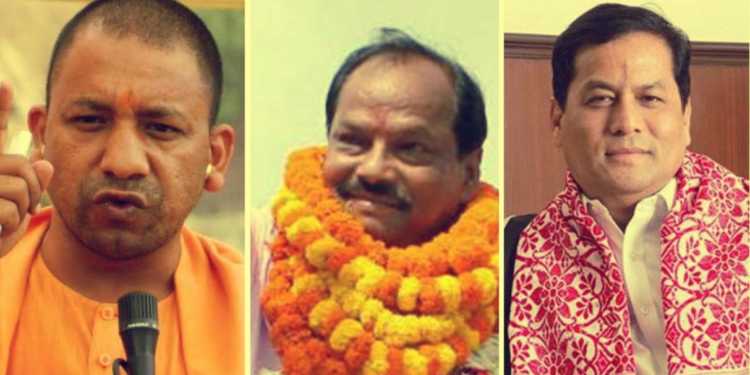Later this month, India will celebrate the completion of seventy years of independence. Sadly, the Indian civilization is staring at an existential threat. The cornerstones of this threat are the three Ms: the mullah, the missionary and the Marxist. The Marxist has infiltrated every sphere of life- the media, the intelligentsia, the academia, pop culture- displaying rabid hatred for everything Indian and paving the way for the mullah and the missionary to spread their tentacles on the ground.
The mullah and the missionary, flagbearers of imported cults, have gone about imposing themselves all around the country systematically and unscrupulously. The mullah’s journey is an old one, perhaps six centuries old. At first, political domination was used to suppress the native way of life, all along creating social conditions conducive for the natives to join their cult and take part in the perpetual holy war. In modern times, we see them play the minority card to take law into their own hands or avail special benefits. Sections of the political class are happy to let them grow and have their way, because alteration in the demographics is their only hope for survival.
The missionary on the other hand has penetrated remote corners of the country. Targeting poor villagers and tribals, victims of decades of Nehruvian socialism and systemic corruption, they have inducted these forgotten people into their fold, often with nothing more than a bag of rice as inducement. Elsewhere, they have appropriated local epics in the context of their cult, and used their corrupted versions to lure the unsuspecting into their fold. Apart from the mainstream backbone provided by the Marxists, both the mullah and the missionary have unlimited coffers. The deadly combination of Marxist mentality, pseudo-secular politics, Arab petro-dollars and Vatican wealth, is eroding the world’s greatest civilization.
It is in this backdrop that some individuals have emerged as “Hindu Hriday Samrats” in the last few decades, understanding this existential threat in its entirety and galvanizing people to stand up against it.
The term Hindu Hriday Samrat (Emperor of Hindu hearts) came about originally after it was used as the title of a book on Balasaheb Thackeray’s life.
Ever since, the term has been popularly bestowed on many figures who chose to stand up for Hinduism, like Subramanian Swamy and even prime minister Modi at some point of his political career. With our civilization facing an existential threat in the decades to come, the next generation of Hindu Hriday Samrats will play a crucial role in reversing this downward trend. In their respective states, they are already working towards rediscovering and reasserting what has been forcibly taken away from us.
Yogi Adityanath, the flamboyant chief minister of Uttar Pradesh who has already made a mark in the short span of a few months, is perhaps going about this in the most unapologetic way. Those who understand the extent of destruction our civilization has undergone, simply wish every political leader displayed at least half the guts Yogi has. With the aim of strengthening the state’s law and order, Yogi has ensured that unlike the previous regimes, the minority card isn’t a factor in dealing with lawbreakers. Members of the minority community squatting illegally on the property of others have been evicted. The corrupt Waqf boards, supposedly established for the welfare of the minority community, have been disbanded. In Noida, when an illegal colony of Muslim immigrants from Bangladesh rioted after one of its members was caught stealing from the house of her employer, the government brought the situation under control and destroyed the colony. This idea that somebody adopting an imported cult does not make them special in any way, that they will be treated like any other Indian under every circumstance, is the first step towards ensuring that our civilization has at least a fighting chance for survival.
But Yogi is two steps ahead of the rest. He has been forthcoming about his views on Indian history, and exposed the Marxist narrative threadbare. The question he constantly raises about the irrationality of the Taj Mahal being a representative symbol of India, has struck a chord and provoked widespread debate. After all, the monument is the work of marauding invaders, and many of our civilization’s works could perhaps be more appropriate symbols of representation. His plans to renovate and revive important temples, build groves and theme-parks based on the Ramayana and the Mahabharata, may be exactly what the country needs to feel proud and to start taking ourselves seriously once again.
In Assam, chief minister Sarbananda Sonowal faces tough challenges. Through the years, millions of Illegal immigrants from Bangladesh have made their way into the state. Since most of them belong to the minority community, Tarun Gogoi’s government and politicians like Badruddin Ajmal have encouraged their immigration to skew the state’s demographics and survive politically. The minority community has now crossed the thirty-percent mark, and as is characteristic, radicalization has begun. The government has cracked down hard on rioting, terrorism and a slew of irrational demands by the community which sparked off protests. As promised during the elections, the government has cracked down on illegal immigration, destroyed their illegal colonies (one was set up inside the Kaziranga, believe it or not) and displayed every characteristic of a strong border state. In Assam, a quiet cleanup has begun.
The latest entrant to the club has been the state of Jharkhand. Each time the media reports an instance of Ghar Wapsi, the hypocritical Congress Party and its ecosystem, which has refused to support an anti-conversion law, cries foul. Chief minister Raghubar Das, instead of waiting for his party to obtain a majority in both houses of parliament and pass a comprehensive anti-conversion act, has brought about his own version for the state. Jharkhand has a large tribal population, and is therefore a potential hotbed for missionary activity. But after the law comes into effect later this month, the missionary will find himself behind bars for three years if he attempts to convert anyone. Each conversion will also set him back by fifty thousand rupees. The punishment will defer if he attempts to convert a minor girl: four years in jail and a lakh of rupees in fine. If any other state cares enough to let the Hindu practice his religion freely, without allurement or coercion, perhaps they could take a cue from Jharkhand.
Across the country, a newfound realization that we must stand up for our civilization before it is run over, is gradually emerging. The three chief ministers, the next generation of Hindu Hriday Samrats, have displayed courage and aptitude.
Let us hope they keep up with their resolve, that others join them, that we quell this existentialist threat, that the imported cults are restrained, and that our civilization can continue unabated in its quest for divine perfection.


































